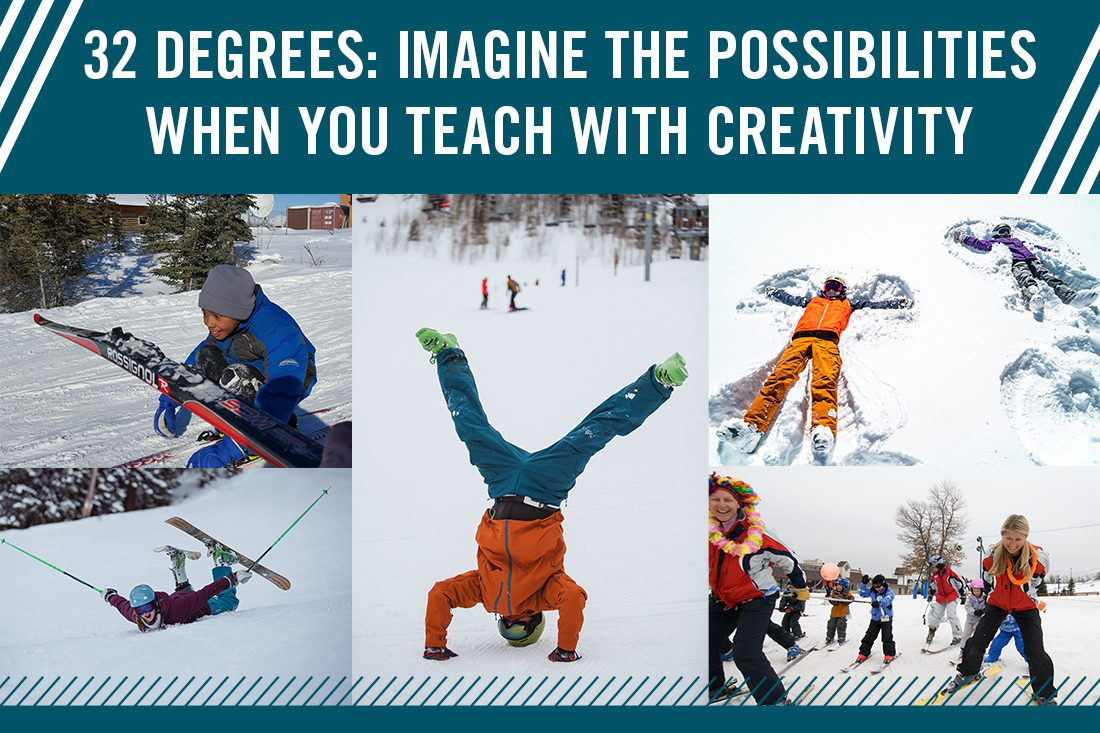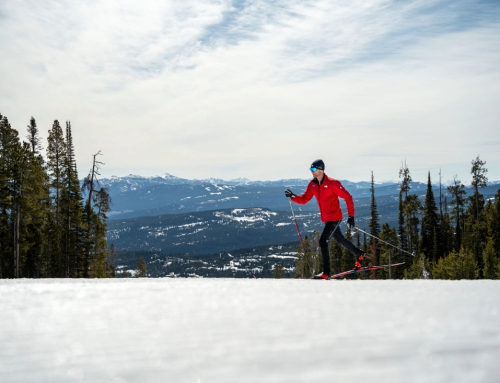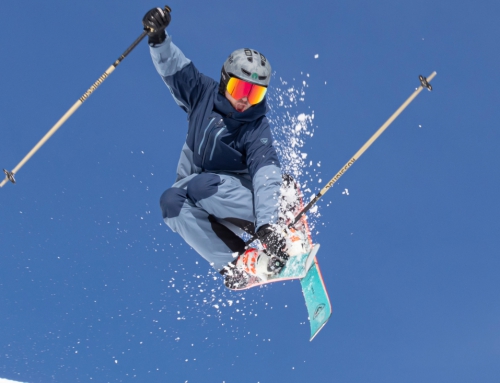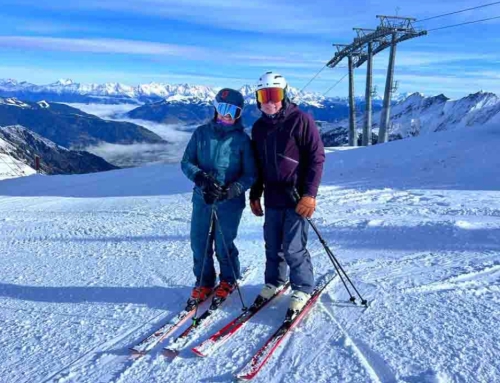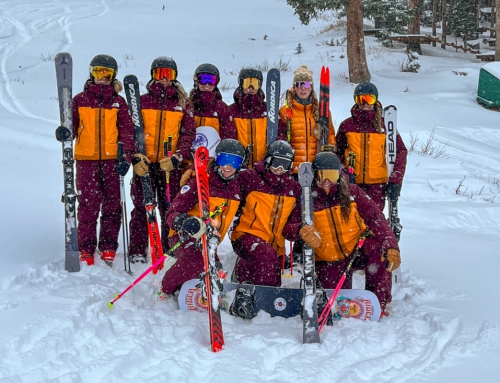32 Degrees: Imagine the Possibilities When You Teach with Creativity
This article by Grant Nakamura appears in the Spring 2024 Issue of 32 Degrees. You can read the entire digital edition by logging in and visiting the 32 Degrees page on our website.
Not a member? Learn how you can start your lifelong adventure through education right here.
Learning and creativity go hand in hand. Your parents, teachers, coaches, trainers, and mentors all used creativity to help you learn and grow into the person you are today. You, in turn, can use creativity to make your interactions with students fun, memorable, and, ultimately, more successful. Whether this approach to lessons comes naturally or takes considerable deliberation and grit, your commitment to creative teaching can foster engagement that makes learning a joy.
If you think creativity – and the games, activities, and drills it inspires – is the sole domain of children’s instructors, think again. Any lesson, regardless of the student’s age, will benefit from thinking outside the box and introducing new ways to interact with the learning environment. One-footed skiing, for instance, can be a fantastic way to hone balance – whether you ask a 10-year-old to mimic a pink flamingo or have their 40-year-old parent pretend they just stepped on a Lego.
CREATIVITY LOST
Many people don’t believe they’re creative, even though we’re all born with that talent. If you don’t believe me, just watch any toddler entertain themselves with a rumpled blanket. Feeling uncreative?
Time to restore that talent in your conscious self and then let it become part of your unconscious teaching persona.
Assessing Creativity
First, do some self-assessment to help frame your relationship with creativity. Try to recognize – and eliminate – impediments to your ability to be creative.
- What’s your definition of creativity? Do you envision elaborate storytelling or quick-thinking solutions to temporary challenges? Maybe a new and “out there” way of thinking about a common situation? Creativity can take many forms. Be open to exploring how your imagination works.
- What obstacles are impeding you from using your creativity to its fullest? Are you afraid you’ll seem silly, that your attempt at creativity will result in blank stares or, worse, sighs and rolling eyes? When students are given the opportunity to unleash their creativity in a safe and welcoming space, that icy façade usually melts pretty darn fast.
- What are some of the best examples of creativity you’ve seen from your colleagues, mentors, and students? Think how they enhanced the experience… and feel free to steal their ideas!
- What’s the best example of your own creativity? Take pride in your successes… and realize you have it in you to be creative!
NURTURE INNATE CREATIVITY
As children, we’re encouraged – at home or at school, through books or at play – to see where our imagination might take us. But as we get older, our priorities seem to shift. Striving to “succeed” often drowns out many of those inspirational voices. We soon convince ourselves that we’re not creative – that nothing inspires us. This is how our creativity is lost. But it doesn’t have to remain lost. Here are personal qualities you can nurture to recapture your creativity.
Courage
It takes courage to put your ideas out there for the world to see and, potentially, to get trolled. Where do you find the courage to manifest your ideas? It resides within you, but is often augmented by the support of friends, family, mentors, etc.
Find a supportive environment within your teaching environment; fellow instructors who, like you, are explorers and adventurers. Encourage each other to share problems, ideas, and successes. Learn from each other. And, find a mentor, be it a formal relationship or an experienced instructor/coach who’s willing to answer questions.
Ultimately, it’s up to you to find the courage to explore and share your ideas with the world.
Enchantment
Do you believe in magic? I do and let me tell you why. Many times, I’ve had an idea come to me “out of the blue” and when I chose to manifest them, those ideas worked!
Here’s a story about one of those times: I was a relatively new instructor at Montana’s Big Sky Resort, just into my second year. Mind you, I had a lot of experience teaching, but at a Minnesota snowsports school where I could almost see the entire area from the bottom of the main chairlift. Big Sky was magnitudes bigger and I had barely explored the more advanced terrain.
On this day, I was assigned a group of high-level skiers – two pairs of cousins age 10 to 14. Their families had been meeting at Big Sky for the Christmas/New Year holiday week for a decade or more. They had an intimate knowledge of the area and were strong and aggressive skiers. After a warm-up run, I was a bit over my head. How was I going to challenge and guide them throughout the day?
Then came the magic. An idea (probably selfish, to be honest) bonked me right in my helmet: “Have them show you their favorite runs! This would give me a chance to learn the upper-level terrain as well as motivate them. So, the bargain was made: They would take the group to a favorite run, I would give them a skiing focus, we would ski it, and then I would give them feedback.
We did this all day – I learned the terrain and their skiing improved. Quid pro quo. At the end of the day, they were still engaged and thanked me for “best lesson ever!”
Learn to accept the magic – the enchantment – of inspiration. Believe, as the Romans did, that instead of being a genius, you have a genius that brings ideas to you. Take hold of it and work with it to manifest creativity in your lessons.
Log in to read the rest of the article.
Grant Nakamura is an Alpine Level III instructor, children’s examiner in PSIA-AASI’s Northern Rocky Mountain Region, and a snowsports instructor and guide in Japan. He was a member of PSIA’s Junior Education Team (JETs) from 1996-2000 and is a professional photographer based in Whitefish, Montana.

